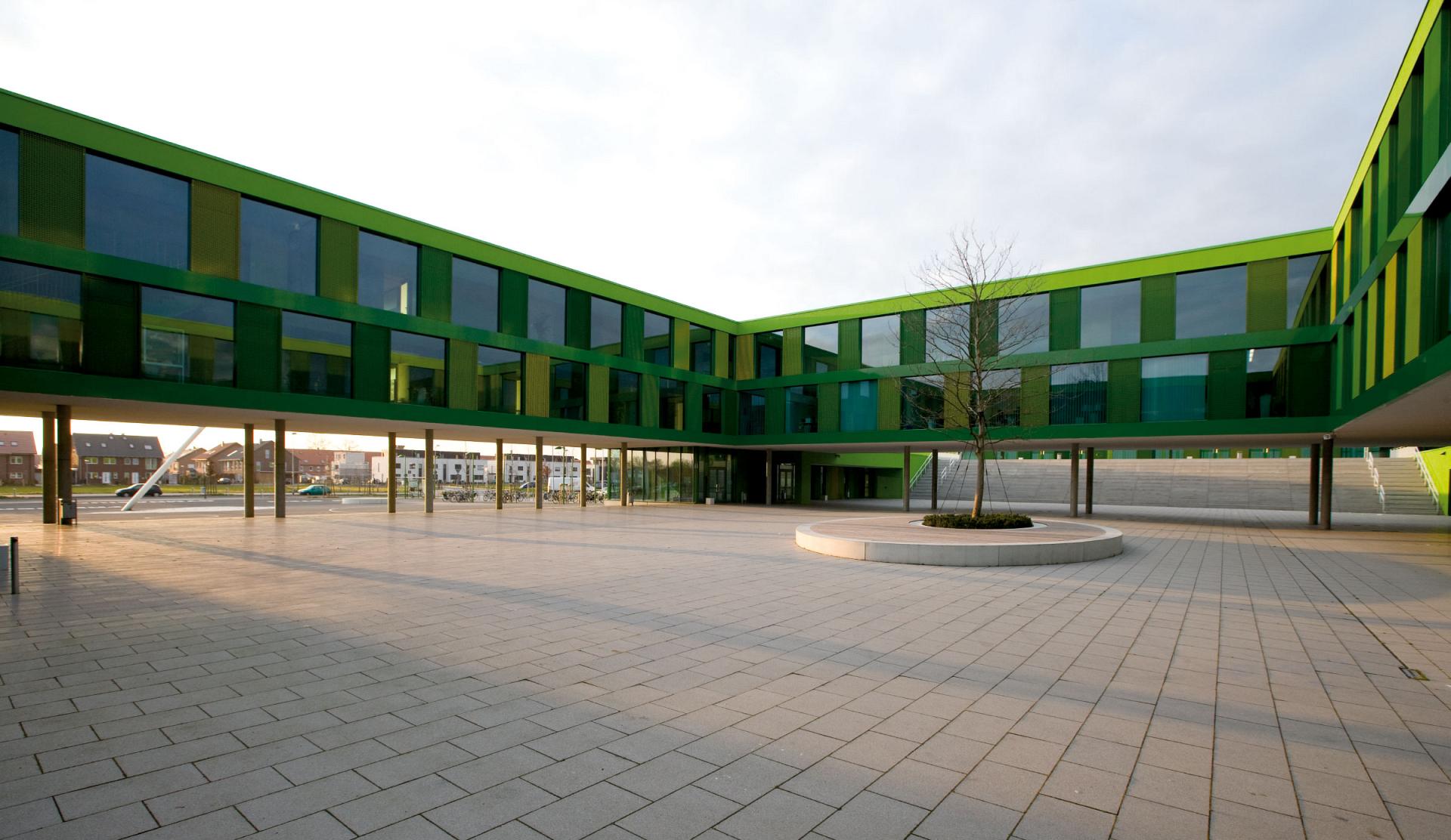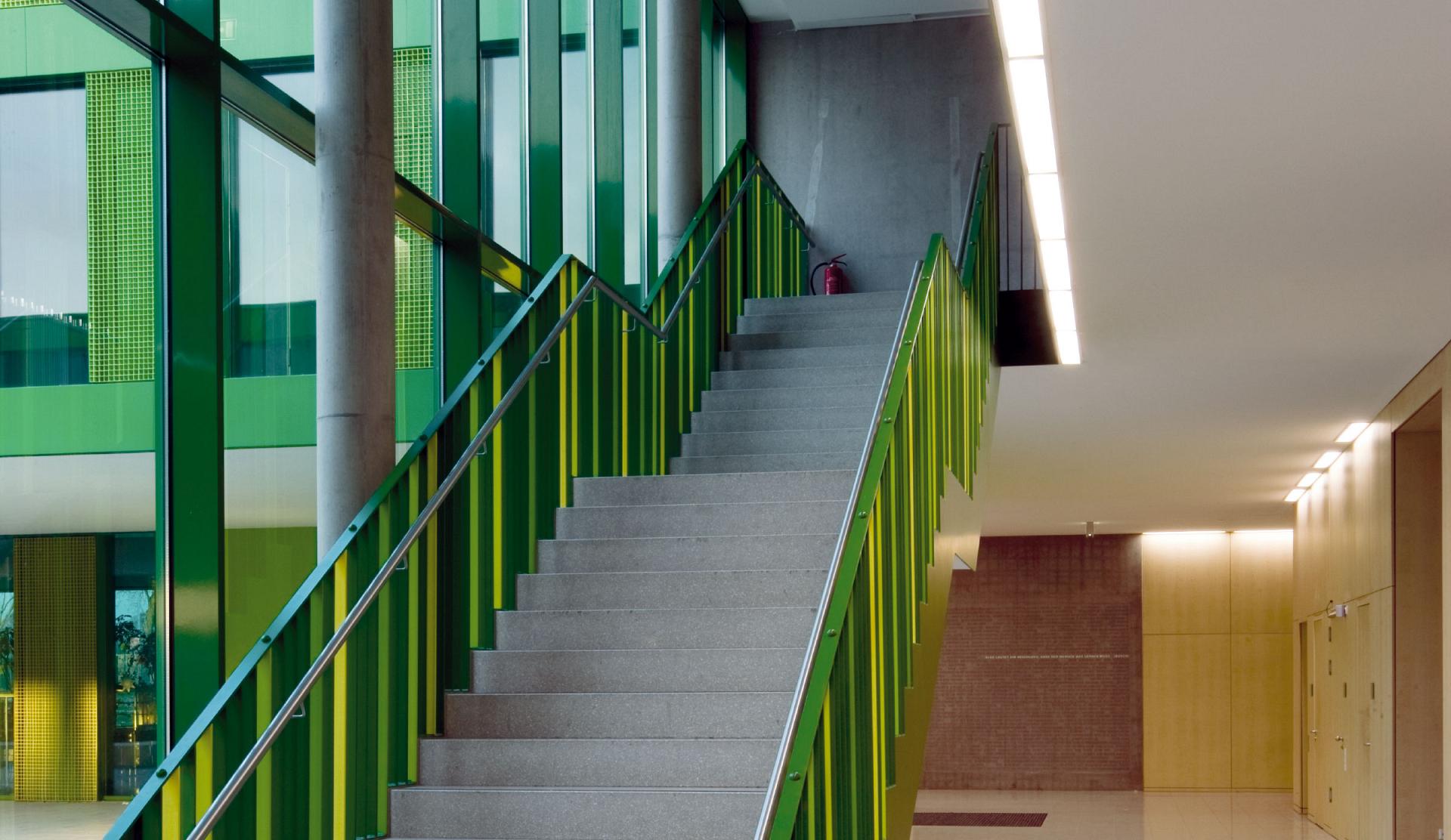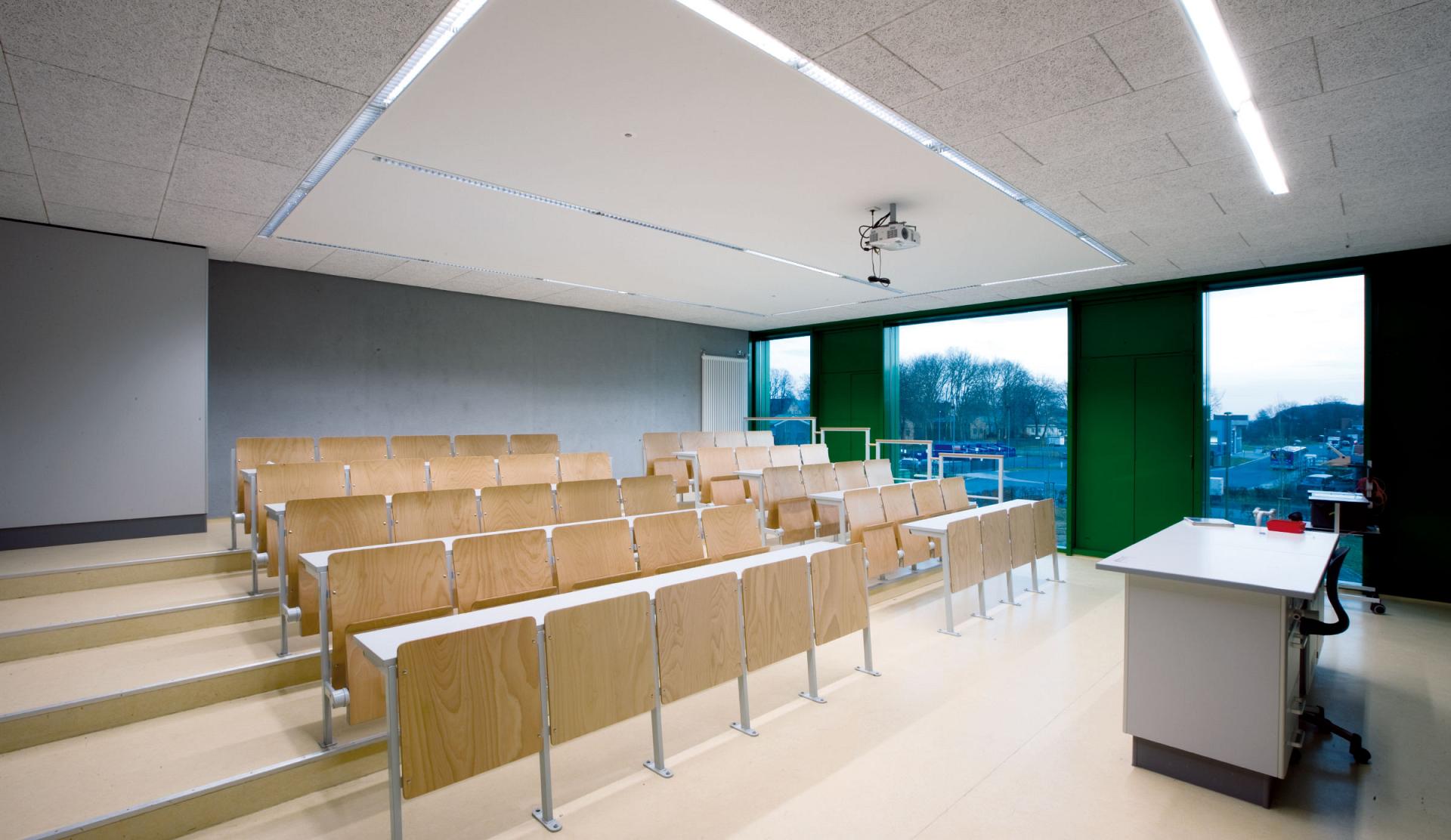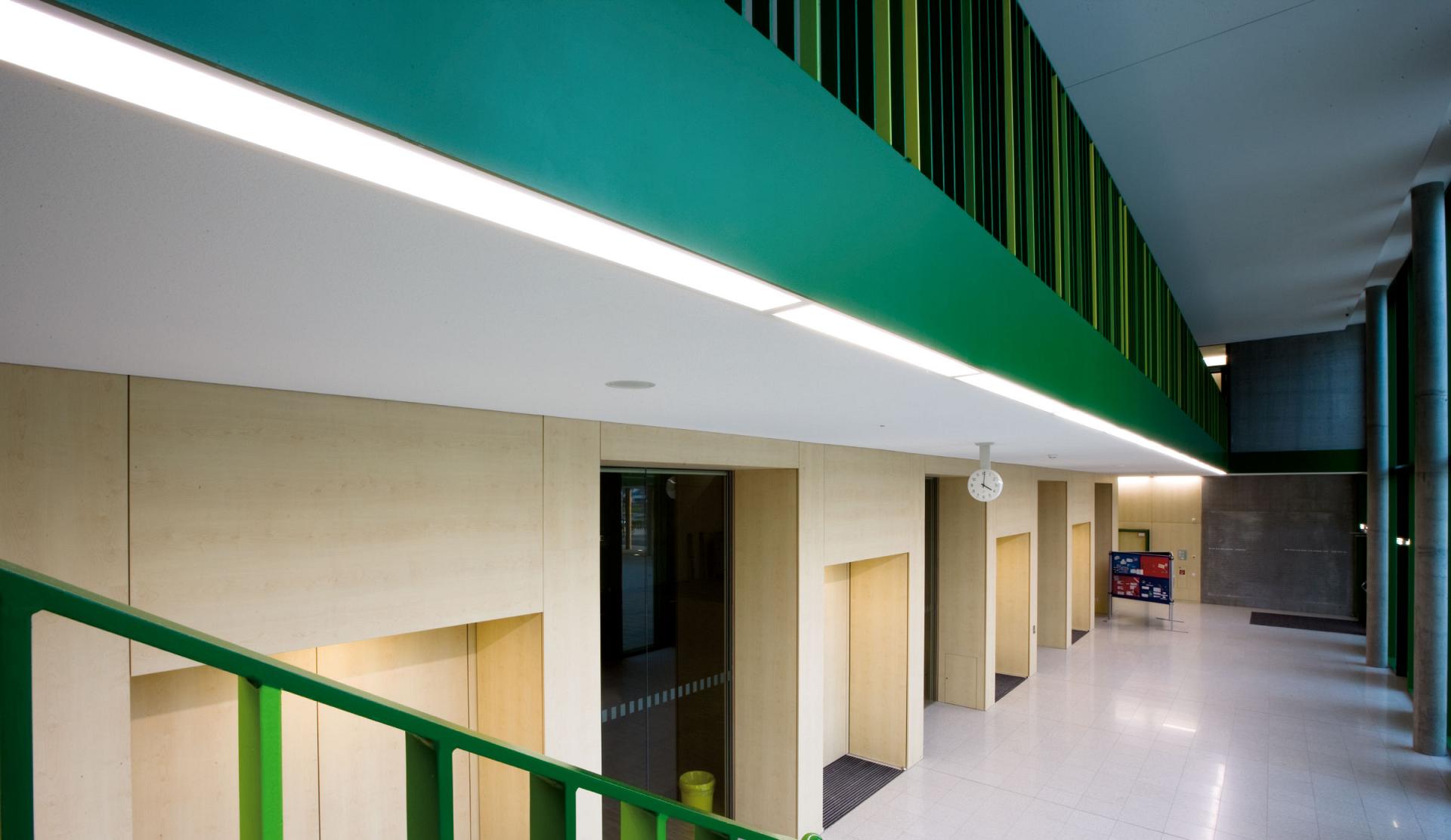Freiherr-vom-Stein-Gymnasium - Münster, Germany
More than just a school
For its 50th anniversary, the Freiherr-vom-Stein school in Münster, Germany, moved to a new building in the suburb of Gievenbeck - designed to be a living space for learning. The challenge for the architects, Kresing, was to ensure that the building not only blended harmoniously with its surroundings, but reflected the school's approach to teaching and learning.
Spot on: the appearance of the new school building complex is airy and individual, an impression underlined by a flexible, accentuating light concept. Luminaires mostly arranged in a linear fashion serve to structure the rooms, support orientation and provide optimal lighting conditions.
The daylight-dependent control system ensures uniformly pleasant lighting and a positive energy balance. Bright moments in the classroom: the lighting supports learning. Light rectangles illuminate the seating of pupils, and consistent, reflection-free lighting conditions are the result. Separate luminaires highlight the teacher's desk and the blackboard. It's clear: this makes learning easier.
Concentration is a part of learning. Well-being is important for concentration. And this in turn needs suitable surroundings. Light is a decisive factor: daylight-dependent control systems adapt artificial light output to the corresponding daylight conditions.
In this way, daylight contributes to saving up to 67% of energy, reducing electricity bills and carbon dioxide emissions. The TRILUX intelligent lighting concept makes it all possible: with dimmable luminaires and simple light controllers, lighting can be increased or reduced. Artificial light is supplied according to the demands of the lighting conditions. The flexible mix of daylight and artificial light has an extremely positive effect on the energy balance. And it also optimises concentration in classrooms – top marks for TRILUX.



